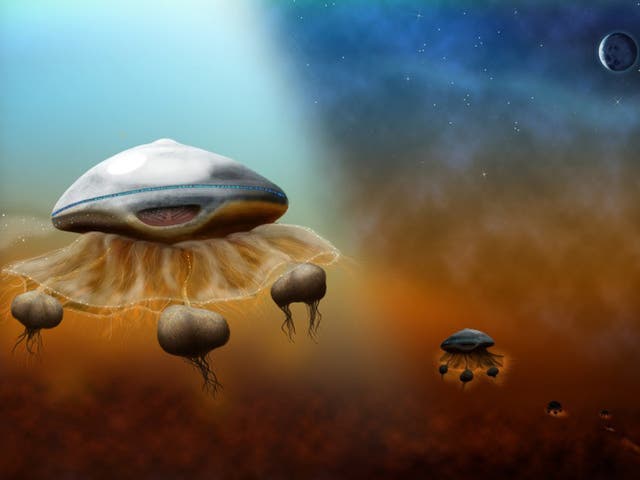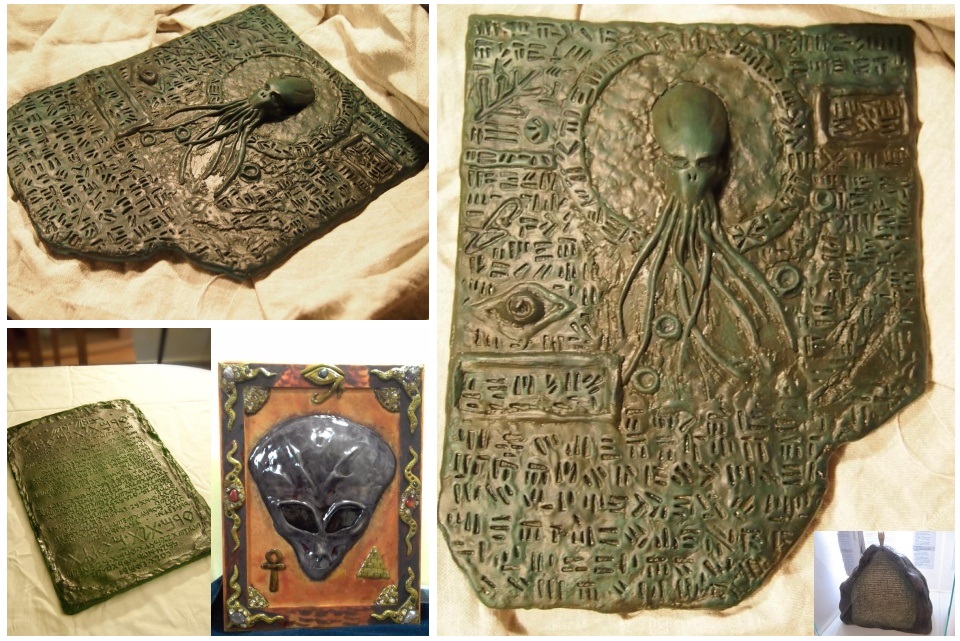According to a British satellite expert and government adviser the outlandish alien imaginings of Hollywood may not be quite alien enough…
From little green men to the crustacean-like ‘prawns’ of ‘District 9’ and H.R.Giger’s nightmarish creation in the ‘Alien’ films – our appetite for imagining how visitors from another planet might look shows no sign of diminishing.
According to a British satellite expert and government adviser, however, the outlandish imaginings of Hollywood may not be quite alien enough.
Discovered in the mountains of Russia a strange mysterious briefcase and two skulls,in the briefcase was also found mysterious alien tablet.

According to the journalists of the newspaper “Komsomolskaya Pravda” and “Rossiyskaya Gazeta” briefcase it has written a strange logo “Ahnenerbe” This case was recently found in the mountains of Adygea.
Dr Maggie Aderin-Pocock – a leading scientist at European space company Astrium – has suggested that, far from being little green men, aliens could actually look like giant jellyfish.
The bizarre creatures the British scientist has dreamt up are she says an example of life “not as we know it”.
The aliens she imagines are the product of what evolution might create on a world such as Saturn’s moon Titan.
She imagines aliens that drift through methane clouds scooping up chemical nutrients into their mouths.
The creatures could also be able to live off light taken in through their skin, says the scientist.
The alien jellyfish – which Dr Aderin-Pocock imagines could be the size of a football field and have an orange underbelly – would be generated from silicon as opposed to carbon, which is the basis of all life as we know it.
The orange underbelly could act as a camouflage allowing them to evade would-be predators.
The aliens are kept afloat by onion-shaped buoyancy bags that dangle from their body, taking in or letting out gas in order to gain or lose altitude.
She also suggests they could communicate using pulses of light.
Dr Aderin-Pocock, who was describing her alien as part of Science Month on TV channel Eden, says much of her inspiration comes from the bizarre life-forms discovered deep beneath the ocean.
She said: “Our imaginations are naturally constrained by what we see around us and the conventional wisdom has been that life needs water and is carbon-based.
“But some researchers are doing exciting work, playing with ideas such as silicon-based life forms evolving on other planets in environments very different to our own.
“My vision of aliens is an inhuman, silicon-based life form that looks much more like a jellyfish than sci-fi’s little green men.”
“Silicon is just below carbon in the periodic table, has some chemical similarities, and is widely available in the universe.
“So perhaps we could imagine similar instructions to DNA but with silicon.
“Maybe life doesn’t have to resemble anything like DNA at all.”
Based on the latest discoveries of star-orbiting planets, Dr Aderin-Pocock believes there could be as many as four intelligent alien civilisations in existence in our galaxy.
But due to the distances involved, she believes we are unlikely to ever encounter them.
“The Voyager 1 spacecraft, which is carrying a recording of greetings from Earth in different languages, has been travelling through the Solar System since the 1970s and has only just made it into deep space,” she said.
“To get to our nearest neighbouring star, Proxima Centauri, would take it 76,000 years.”
Her imagined extra-terrestrials would also not be able to survive if they visited earth – finding the damp oxygenated atmosphere lethal.
A manul cub named Dasha is a wild kitten who grew up in a human family

Wild animals should live in nature. But it happens that the fate of their children is completely in the hands of a person. So it happened with the little kitten manula. His mother made a nest in a very unfortunate place — in an abandoned iron wagon. And when the wagon began to be towed for repairs, she just got scared and ran into the woods. And the kitten was left alone.
After the fluffy find was discovered, Vadim and Olga took him to themselves.

The baby was named Dasha. The baby was dehydrated and they began to solder her with saline from a syringe. And when she got a little stronger, they began to slowly inject milk.

And over time, Dasha independently learned to drink from a baby’s nipple. After eating, a mandatory procedure is a tummy massage (this is what cat mothers do to their children).
Dasha sleeps in an improvised hole made of a cardboard box. When the kitty got stronger, they began to feed her with a special mixture. And at 1.5 months, she had already tasted meat.

By the way, at 1.5 months, the kitten’s eye color completely changed from blue to yellow, and the expression of the muzzle became more severe.
By the way, at 1.5 months, the kitten’s eye color completely changed from blue to yellow, and the expression of the muzzle became more severe.
After a few months, Dasha began to come out of her nest into nature. At first she was afraid and immediately returned to the feet of her “foster parents”, but gradually got used to it.

In addition to Manul , three cats still live in the house . At first, the friendship between domestic and wild animals did not develop in any way. Cats hissed at Dashka all the time.

Manul grew up very wayward. Dasha accepted affection only from the “foster mother”.
And yet she was a wildcat. Growing up, she increasingly lived on her own. She began to sleep separately from her “parents”.

“You wake up in the morning, and Dasha is already sitting quietly on the window and watching what is happening on a rural street. Both at night and early in the morning, she behaved very delicately. She tried not to wake anyone. Also, she is generally very talkative. She modestly asked for food. When she hears that the refrigerator is being opened, she runs up and scratches into it, standing on her hind legs, begging for a chicken.” Pets do the same, apparently, it’s in their blood.

It was necessary to solve something with Dasha’s future. They did not want to give her to the zoo, as they initially planned to let her go free. It was already becoming dangerous to keep at home, too.
It was decided to take her to the reserve — the area where the manuls live. For the first time being free, Dasha ran away into the forest. But she was returned so that she would not get lost and get used to her new place.